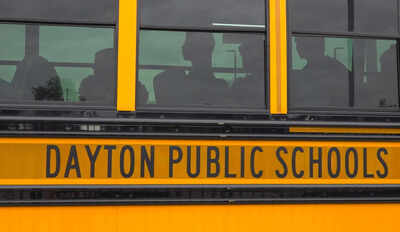ARTICLE AD BOX

This video taken from photos shows students boarding a school bus on August 21, 2025 in Dayton, Ohio. (AP Photo)
Thousands of Ohio public school students are starting the school year without access to traditional school bus services, as public districts face logistical and financial constraints intensified by state-mandated private school transport requirements.
The shortfall has left many families scrambling to find alternative ways to get their children to school.The crisis has emerged due to a combination of an ongoing driver shortage, increasing demands under the state’s EdChoice voucher programme, and Ohio’s existing school transportation laws. As reported by the Associated Press, some districts, such as Dayton and Columbus, have been forced to cut or cancel services for their own high school students, while continuing to bus students attending private and charter schools.Public schools required to transport private school studentsUnder Ohio law, public school districts are responsible for transporting K–8 students to private or charter schools, even during public school holidays or when buses break down. If a district provides any transportation for its own high schoolers, it must extend the same to all private or charter high school students in the same area.These regulations have become more difficult to manage since the expansion of the state’s universal voucher programme, which now includes nearly 90,000 students — a sharp increase over the last four years.
Public districts must either bus these students or declare the service "impractical," and instead offer families a payment in lieu of transportation.In Dayton, the district operates 54 routes for its public students but runs 74 routes for non-public students, according to data from the Ohio 8 Coalition, which represents the state’s eight largest urban districts. Dayton Superintendent David Lawrence said that eliminating the requirement to transport private and charter school students could allow the district to provide door-to-door service for all of its public school students.
He was quoted by the Associated Press as saying this would also resolve safety and behavioural concerns tied to public students using city buses.Dayton and Columbus face legal disputes over transportThe Dayton school district recently secured a temporary court order allowing it to issue public transit passes to students instead of traditional school bus rides. The ruling followed a lawsuit in which the district alleged the state illegally restricted the programme.Meanwhile, in Columbus, the state has sued the district for allegedly failing to meet transportation mandates for voucher students. The Associated Press reported that Republican Attorney General Dave Yost accused the Columbus school board of neglecting its legal duties and stated that some parents were being forced to quit jobs and rearrange schedules due to the lack of school transport.Columbus transported more than 16,000 public school students and 3,400 non-public students this year using over 450 routes.
The district budgeted $75 million for transportation and an additional $15 million for transport-related fines.Financial burden of expanding transport mandatesAccording to the Associated Press, Republican state Senator Andrew Brenner, chair of the Senate Education Committee and a school choice advocate, stated that districts were given $1,500 per student to support transportation costs for voucher students.
However, public school officials argue that the actual costs far exceed that amount.In Cleveland alone, the district paid families for 2,739 students who were deemed impractical to transport to private schools. Columbus followed closely, compensating around 2,500 students. These reimbursements ranged from approximately $600 to $1,200 per student, depending on circumstances.Superintendent Lawrence highlighted the operational costs tied to meeting current transportation obligations.
As detailed by the Associated Press, in Dayton, buses can cost more than $150,000 each, drivers earn about $22 per hour with benefits, and mechanics are paid $66,000 annually. The district’s maintenance division also costs around $1.1 million.Proposed solutions and legislative reviewSome lawmakers, including Senator Brenner, have suggested that public districts could explore combining transportation operations across counties to improve efficiency.
A study group was formed in the last state budget to examine transportation for non-public students on days when public schools are closed. The group’s findings are expected by June 2026.While the Ohio 8 Coalition has called for updates to what it terms “antiquated” laws, no changes have been finalised. Public districts continue to manage rising transport costs while complying with state mandates and voucher programme obligations, as reported by the Associated Press.



.png)
.png)
.png)
















 1 day ago
5
1 day ago
5







 English (US) ·
English (US) ·